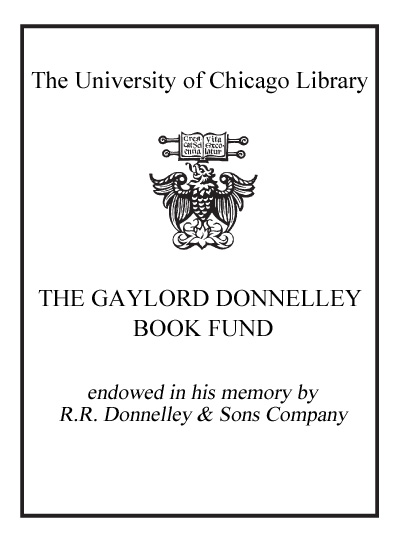Democratic representation in Europe : diversity, change, and convergence /
Saved in:
| Imprint: | Oxford ; New York : Oxford University Press, 2007. |
|---|---|
| Description: | xxiii, 527 p. : ill. ; 24 cm. |
| Language: | English |
| Series: | Comparative politics Comparative politics (Oxford University Press) |
| Subject: | |
| Format: | Print Book |
| URL for this record: | http://pi.lib.uchicago.edu/1001/cat/bib/6659425 |
Table of Contents:
- List of Figures
- List of Tables
- Notes on Contributors
- Preface
- 1. Parliamentary Representatives from Early Democratization to the Age of Consolidated Democracy: National Variations and International Convergence in a Long-term Perspective
- 1.1. A long-term perspective on the democratization of Europe: political representation and the great change of European societies
- 1.2. Research bases
- 1.3. Theoretical perspectives
- 1.4. Previous findings: variations and common trends in the long-term change of European parliamentary recruitment and careers
- 1.5. Mapping differences and similarities: research questions and guidelines for this book
- 1.6. Searching for explanations
- 1.7. The plan of the book, chapters, and their contents
- Part I. Dimensions of Variation
- 2. The Decline of the Nobility
- 2.1. Introduction
- 2.2. The pre-democratic role of the nobility
- 2.3. The nobility and democratization
- 2.4. Conclusion
- 3. From Servants of the State to Elected Representatives: Public Sector Background among Members of Parliament
- 3.1. Preliminary remarks
- 3.2. Two perspectives for understanding the weight of the etatiste background among parliamentary elites
- 3.3. The variables and data in the DATACUBE
- 3.4. An historical trend
- 3.5. Components of the public service
- 3.6. Variations across countries
- 3.7. Variations across parties
- 3.8. Concluding remarks
- 4. Why so Few and Why so Slow? Women as Parliamentary Representatives in Europe from a Longitudinal Perspective
- 4.1. Introduction
- 4.2. The concept of gender parity
- 4.3. Research findings from the literature
- 4.4. Hypotheses and methods
- 4.5. Data analysis
- 4.6. Conclusion: why so slow, and why so few? Gender parity in the European Parliaments
- 5. Cultural Capital and Political Selection: Educational Backgrounds of Parliamentarians
- 5.1. Historical transformations of educational backgrounds of parliamentarians
- 5.2. The causes of the elevation of parliamentarians' education level
- 5.3. Consequences: towards new forms of political professionalization and new channels of representation
- 6. A Career through the Party: The Recruitment of Party Politicians in Parliament
- 6.1. Introduction
- 6.2. Parties and 'party politicians'
- 6.3. Recruitment of party officials
- 6.4. Recruitment of party functionaries
- 6.5. The role of the parties
- 6.6. Concluding analysis and discussion
- 7. The Geographical Dimension of Parliamentary Recruitment-among Native Sons and Parachutists
- 7.1. Geography and recruitment
- 7.2. A conceptual framework
- 7.3. A micro approach
- 7.4. A quick tour of Western Europe
- 7.5. The longitudinal perspective
- 7.6. A two-country exploration: Denmark and Norway
- 7.7. Propositions for future research
- Part II. Variations across Party Families
- 8. The Changing Nature and Role of European Conservative Parties in Parliamentary Institutions from 1848 to the Twenty-first Century
- 8.1. Questions, expectations, and rationale of the chapter
- 8.2. The fortunes of conservative parties within European parliaments
- 8.3. The original profile of conservative parliamentary recruitment
- 8.4. Conservative politicians in the age of 'catch-all parties': towards a 'centre-right' pattern of recruitment?
- 8.5. The recent 'neoconservative' elite
- 8.6. Conclusions
- 9. Restructuring of the European Political Centre: Withering Liberal and Persisting Agrarian Party Families
- 9.1. The liberal party family
- 9.2. The agrarian party family
- 9.3. Transformation of the agrarian parties into centre parties
- 9.4. Hypotheses
- 9.5. Education
- 9.6. Occupation
- 9.7. Political experience
- 9.8. Female representation
- 9.9. Conclusions
- 10. Christian Democratic Parliamentarians: From a Century of Multifaceted Recruitment to the Convergence within a 'Larger Family'?
- 10.1. Introduction: research questions and structure of the chapter
- 10.2. The emergence of a Christian Democratic parliamentary elite: When and how?
- 10.3. Parliamentary recruitment of the European Christian democratic parties: long-term trends
- 10.4. Recent developments: new types of Christian Democratic representation?
- 10.5. Conclusion: from the multifaceted recruitment patterns of an historical party family to converging but 'less Christian Democratic' elites
- 11. Socialist and Communist Members of Parliament: Distinctiveness, Convergence, and Variance
- 11.1. Framework and hypotheses
- 11.2. The beginning-how to be distinctive
- 11.3. Socialists, communists, and the others
- 11.4. Variations within the party family
- 11.5. Conclusions
- 12. The Extreme Right
- 12.1. Introduction: extremisms on the right
- 12.2. From the late nineteenth century to the Second World War
- 12.3. Post-war extremists and neo-fascists
- 12.4. Conclusions
- 13. Parliamentary Elites of New European Party Families: Unsuccessful Challenges or Chaotic Signs of Change?
- 13.1. Anarchists, alternatives, beginners? 'New politics' representative elites after 1970
- 13.2. The impact of three 'new' party families within parliamentary representation in European countries
- 13.3. How to deal with data on new parties: the small 'N' problem and the significance of 'challengers' MPs
- 13.4. Working hypotheses and data exploration
- 13.5. Towards a tentative interpretation
- 13.6. Final remarks
- Part III. Comprehensive Analyses
- 14. Cleavage Representation in European Parliamentary History
- 14.1. The cleavage concept and elite theory
- 14.2. Research concepts and methods
- 14.3. Elite structure and cleavage development: France in comparative perspective
- 14.4. Strategies and dynamics of cleavage representations: a comprehensive view
- 15. Paths of Institutional Development and Elite Transformations
- 15.1. Democratization and the transformation of parliamentary elites
- 15.2. Searching for explanations: some preliminary hypotheses
- 15.3. The dependent variables
- 15.4. The independent variables
- 15.5. What empirical evidence for our hypotheses?
- 15.6. Between discontinuity and adaptation: the effects of regime changes on the European parliamentary elites of the late twentieth century
- 15.7. Conclusions
- 16. Conclusions
- References
- Index

